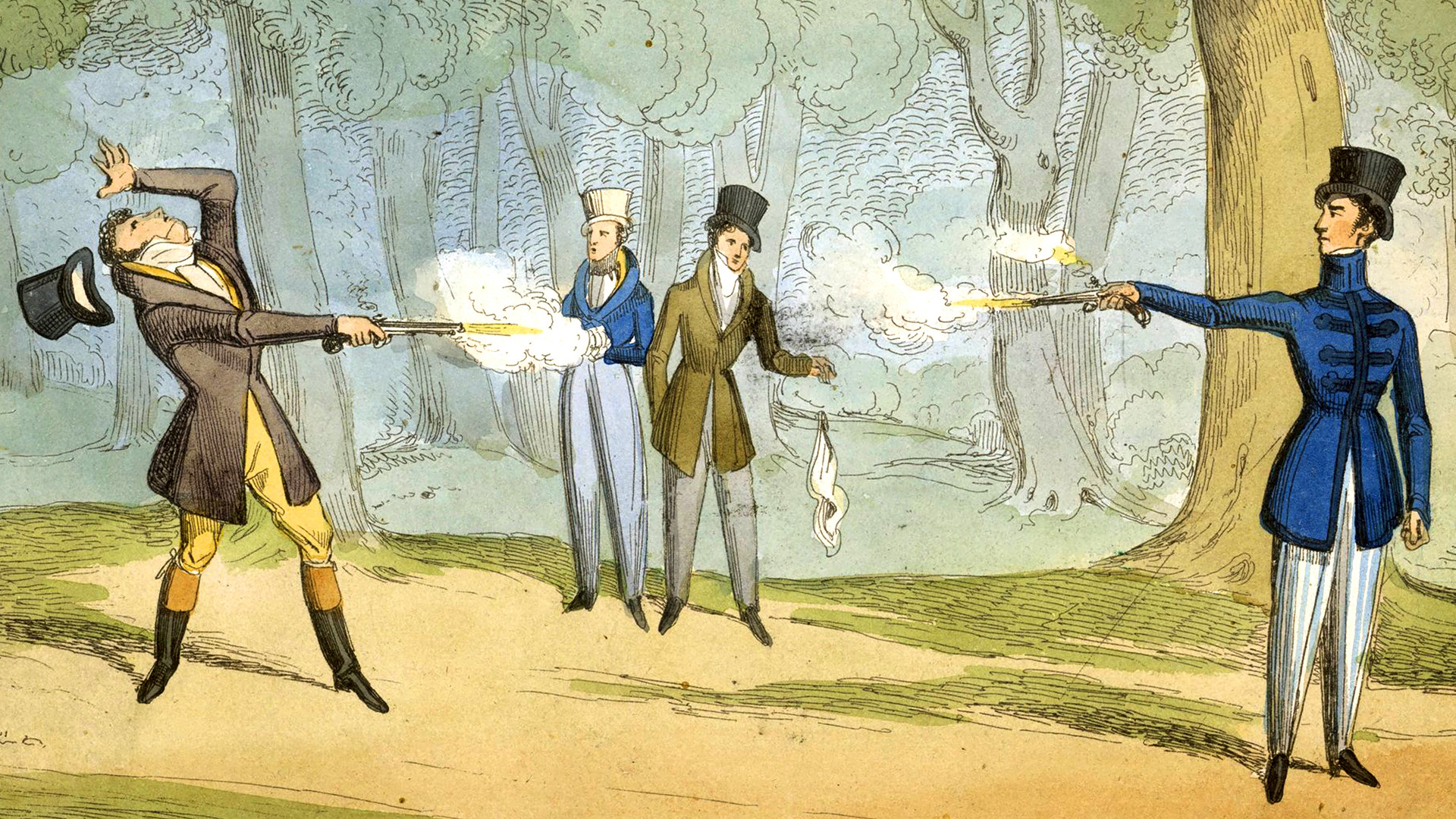Hello ladies and gents this is the Viking telling you that today we are talking about
DUELS
Avert Your Eyes, You Lustful Wretches”
One hundred years after the Petticoat Duel, Princess Pauline Metternich and Countess Kielmannsegg had an argument over floral arrangements at a musical exhibition. Understandably, the women decided to duel. Topless. The reason? Any clothing pushed into a wound could cause an infection. The potential injury from a sword was oddly overlooked.
With women serving as the seconds and Baroness Lubinska presiding, it was the first “emancipated duel.” After the men had turned their backs, the women began fighting with swords, and each received wounds. As they cried out, the men attempted to provide aid. However, Baroness Lubinska beat them with her umbrella and called them “lustful wretches,” thinking their motives weren’t entirely altruistic.
The Sword Is Mightier Than the Pen
In 1870 Édouard Manet took offense over art critic Louis Edmond Duranty’s review of two of his paintings. Upon encountering him at a café, Manet slapped Duranty, and the two men agreed to duel. They elected to use swords, and Émile Zola served as Manet’s second. Duranty was wounded in the chest, at which point it was decided that Manet’s honor had been restored.
“The Most Serene Order of Cuckolds”
In 1836 Aleksandr Pushkin, the founder of modern Russian literature, received a letter that announced that he had been elected to “the Most Serene Order of Cuckolds,” a reference to the unsubstantiated claim that his wife, Natalya Nikolayevna Goncharova, was having an affair with Georges d’Anthès, a French soldier living in Russia. D’Anthès was able to convince Pushkin that there was no affair, and he even later married Natalya’s sister. However, the rumor persisted, and in 1837 the two men finally dueled. Pushkin was mortally wounded, and he died two days later.
A Caustic Tongue, a Corrupt Bargain, and a Large Morning Gown
At the age of 18 John Randolph was reportedly involved in his first duel, which arose over the pronunciation of a word. His opponent, a fellow student, was wounded. Randolph subsequently embarked on a successful political career, despite having what one newspaper claimed was a “caustic tongue.” In the 1820s he turned his ire on Henry Clay, who had supported John Quincy Adams for president in 1824 and later was made secretary of state in what some called a “corrupt bargain.”
In 1826 Randolph referred to Clay as a “blackleg” (cheating gambler), and Clay demanded a duel. The two men faced off in Virginia, with Randolph wearing a large “morning gown” that made the “locality” of his body a “vague conjecture.” On the first exchange of gunfire, neither was hurt. They then agreed to a second round. After Clay missed, Randolph shot into the air. The duel ended, and the two reportedly became friends.
Never the Twain Shall Duel
In 1864, while working for a newspaper in Nevada, Mark Twain became involved in a heated dispute with James Laird, the publisher of a rival paper. Reportedly, the conflict started when Twain accused Laird’s paper of failing to follow through on a promise to give money to a charity. Things quickly escalated, and the two men agreed to duel. However, Twain’s pistol was no match for his pen.
He was a horrible shot, despite shooting lessons from Steve Gillis, his second. Shortly before Laird was to arrive for the duel, Gillis shot a bird and then informed Laird’s supporters that Twain had killed the animal, from a distance of 30 feet. The nervous Laird subsequently agreed to call off the duel. Twain wrote about the experience on several occasions, but some historians believe that the duel was never even scheduled and that Twain’s version is pure fiction.
And as always have a chilled day from the Viking

Comments
Post a Comment